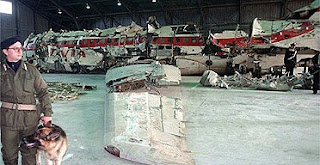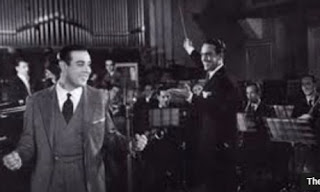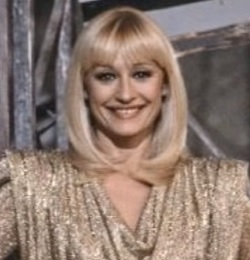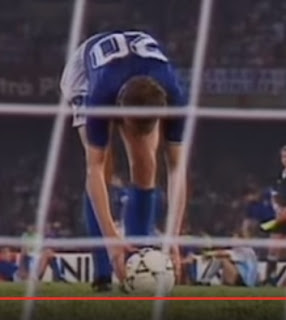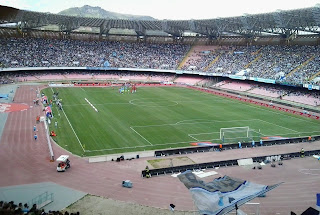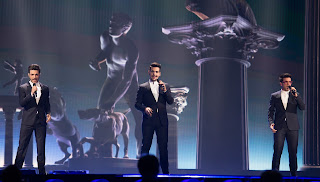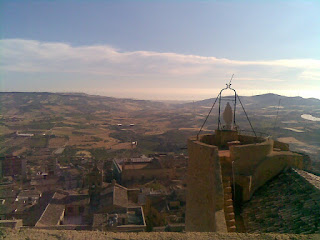200m specialist won gold at Moscow in 1980
 |
| Pietro Mennea at his first Olympics in 1972 |
Mennea won the 200m final at the Moscow Olympics in 1980,
depriving Britain's Allan Wells of a sprint double. In doing so, Mennea
emulated his compatriot, Livio Berruti 20 years earlier in Rome.
He held the world record at 200m for almost 17 years, from
1979 until 1996. His time of 19.72
seconds remains the European record.
It would stand as the world record for 16 years, nine months
and 11 days, until Michael Johnson ran 19.66 at the US Olympic trials in 1996.
As well as winning his gold medal, outrunning Britain’s Allan
Wells in the last 50m, Mennea’s other great Olympic feat was to reach the 200m
final at four consecutive Games, the first track athlete to do at any distance.
He also won the bronze medal in Munich in 1972, was fourth in 1976 at Montreal
and seventh place in Los Angeles in 1984.
At his last Olympics, in 1988, he carried the Italian flag
at the opening ceremony.
Famous for his rather frantic running style, Mennea set the
200m record on September 12 1979 at the World University Games in Mexico City,
his time surpassing the record of 19.83, set by the American sprinter Tommie
Smith on the same track at the 1968 Olympics.
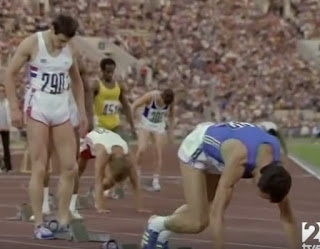 |
| Pietro Mennea gets down to his mark at the start of his duel with Allan Wells (left) in the 1980 Moscow final |
Known in Italy as “la freccia del sud” - “the arrow of the south” – he also won gold
at the European Championships in Rome in 1974 and Prague in 1978, where he also
took the gold in the 100m.
Mennea was born in Barletta, on the Adriatic coast, the son
of a tailor. When he was young, the story goes, he would bet against car owners
that he could take on their Alfa Romeos and Porsches over 50 metres and win.
Blessed with such pace, it didn't take him long to make an
impact on the track. He was a double Italian champion at 19 in 1971. The 1972
Olympics at Munich, where he won a bronze medal, was his first international
championship.
His career was not without controversy. After retiring,
Mennea admitted taking supplements of human growth hormone, though he added
that it was not illegal at the time.
After retiring from sprinting, Mennea drew on the extensive
qualifications he acquired as a student, including degrees in political
science, law, physical education and literature. He had been a student at the University of
Bari at the time when Aldo Moro, who had been prime minister of Italy and would
be again, was a professor.
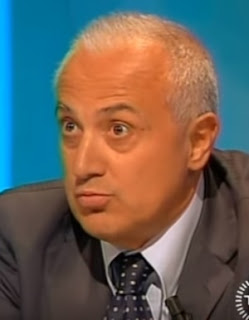 |
| Mennea was a politician in later life |
Mennea also stood at the 2001 general election is a
candidate for the Senate in Barletta-Trani under the centre-left Italy of
Values banner but was not elected. In 2002 he was a candidate for mayor of
Barletta with the centre-right party Forza Italia, but was defeated in the
first round.
He died in 2013 aged only 60 after a battle with cancer. Hundreds
of Italian athletics fans filed past his open coffin and the headquarters of
the Italian Olympic committee in Rome, where World Cup winner Dino Zoff and
Olympic boxing champion Nino Benvenuti were among those who paid their respects. His funeral took place at the Basilica of
Santa Sabina on the Aventine Hill, not far from the Circus Maximus.
Santa Sabina is perched high above the Tiber river, next to
small public park Giardino degli Aranci (Garden of Oranges), which has a scenic
terrace overlooking Rome. The oldest extant Roman basilica in Rome, dating back
to the fifth century, it preserves its original colonnaded rectangular plan and
architectural style, which is said to represent the crossover from a roofed
Roman forum to the churches of Christendom.
Mennea’s home city of Barletta lies about 60km (37 miles) north of Bari on the
Adriatic coast. It is a working port with modern suburbs and an attractive historic
centre, where one of the most famous sights is an ancient bronze 'Colossus',
thought to be the oldest surviving bronze Roman statue. The identity of the figure
the statue represents is not clear but one theory is that it is the Byzantine Emperor
Marcian and that the statue’s original home was in Constantinople. Barletta has a beautiful 12th century cathedral, renovated in the 14th century, the Basilica of Santa Maria Maggiore.
Home



